Durón (Guadalajara) 1 of 2
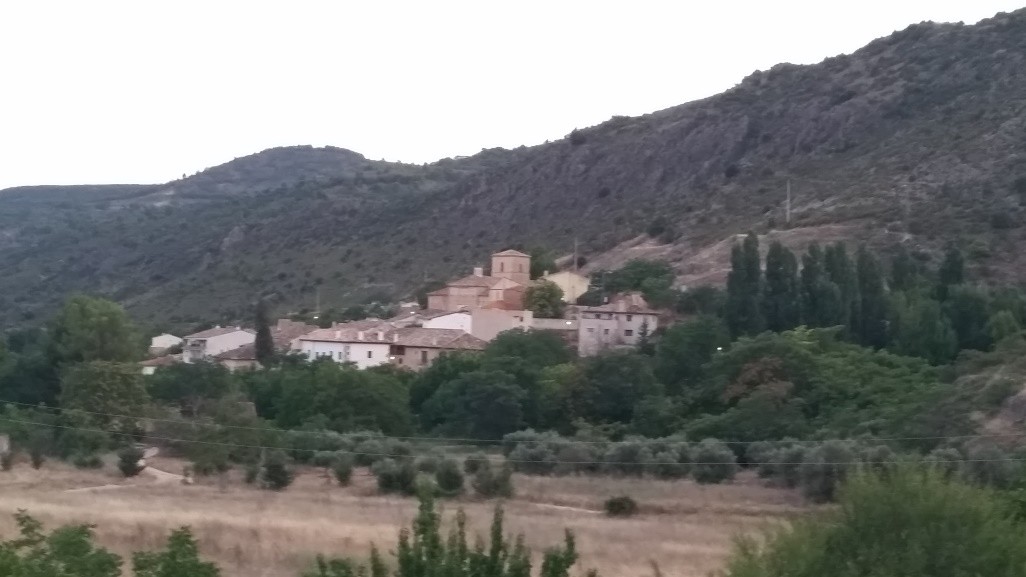 Trip to Durón
Trip to Durón
Durón is a village in Guadalajara, situated near Cifuentes and Sacedón to give you an example of the most well-known villages. My grandfather on my mother's side was born in this small neck of the woods on the bank of the reservoir Entrepeñas, and that's why I've spent a good part of my summers here.
To be honest, Durón is a small village with a population of around ten people (during the winter months), and although I hope I'm wrong in saying this, perhaps one day it'll turn into an abandoned village where no one wants to live, like the neighbouring village called Valdelagua. That's where a lots of small villages are heading, due to its little activity and its population decline, it will be made history and the life of squares and small streets will only be witness to great silence and a victim of memories. That's why as an attempt to make people know about this beautiful little village and so it doesn't get forgotten about, I'd like to share all the charming things it has to offer with you, and there are many.
What does Durón have to offer?
At one with Nature
Surrounded by mountains and valleys, the village is the proud owner of a rock formation called Durón Caslte or "Castillo de las Marañas". It gets its name from the fact that many centuries ago, the mountains were home to a fortress (now nothing remains of it).
If you like the mountains and want to explore indescribable landscapes in pure nature, you can't miss out on the Hoz Angosta or Zangosta, which is a walk between the impressive gorges, home to extraordinary endangered birds. If you click on the link to the official website, you can find out about the history of the village as well as looking at pictures, like the "Granillo Sal", an indigenous rock formation in the form of a human head.
On the other hand, if you like animals, there's the option of going on a horse or a pony ride with the Cuadra de caballos Bellavista (a tourism company).
There are many climbing routes which you can go on although it's not necessary to go too far, walking through the village is simply delightful.
The structure of the village
When you get to Durón, you'll see that there's a road which divides the village into two: on one side there's a cluster of houses forming a little neighbourhood which is known as "El Villar". That's precisely where my grandparents' house is. You'll also find the village cemetery (from the year 1836) and the Hermitage of San Roque, which dates back to the 17th century. Whereas on the other side, you'll find most of the residents, different excavated caves in the mountain, which were used as shops years ago, and before that as a refuge during the Civil War, and the Plaza Mayor (square). By the way, some of the caves I mentioned before are turned into clubs nowadays during the party season.
In this second area you can see practically all the most relevant places such as the Town Hall, the pillory, the church Santa Marís de la Cuesta and the cavalrymen's church.
In the village there's also a children's park, a sports centre and they are undergoing the construction of a swimming pool at the moment. In addition, there's a really special place, surrounded by huge trees, with an area to have barbecues and also where the stream la Vega passes by and there's a big basin (it's right at the entrance to the village and it's for everyone to use. It has a few tables and stone benches).
In any case, if you fancy having something to drink, you can go to the "Bar del Centro Social", a small place near Plaza Mayor, on the first floor of a building which is also the library and a function room where they hold certain celebrations.
In the village, there's also a restaurant with a large terrace. In fact, it's the only restaurant there and it's called "El Cruce". It's right in the middle of a crossroads: the one which takes you to the Entrepañas reservoir in one direction towards Sacedón and in another direction towards Cifuentes. The prices are great, and they have lots of wonderful aperitifs.
Right in front of the restaurant, you can see the small Hermitage of Santa Barbara, also known as the Hermitage of San Sebastian. Some years ago, there was another hermitage, called La Soledad but it's no longer in use as it's someone's home now.
Parties and celebrations
It's in Plaza Mayor, like in most villages, where they celebrate most of the events during the celebrations in the middle of August. The square is practically deserted and almost forgotten about during the autumn and winter months, except during these 4 or 5 days of parties where it's absolutely packed.
The parties seem to give the village another light when the music floods the streets. If you like having fun listening to bands and DJs until sunrise, and you're in a festive mood, you can't miss out on these celebrations. If you're ever in the area, I'll warn you that people have a "bad habit" of throwing the outsiders into the fountain in the square. And they do it when you're least expecting it! (I'm joking, they'll only tease you about doing it).
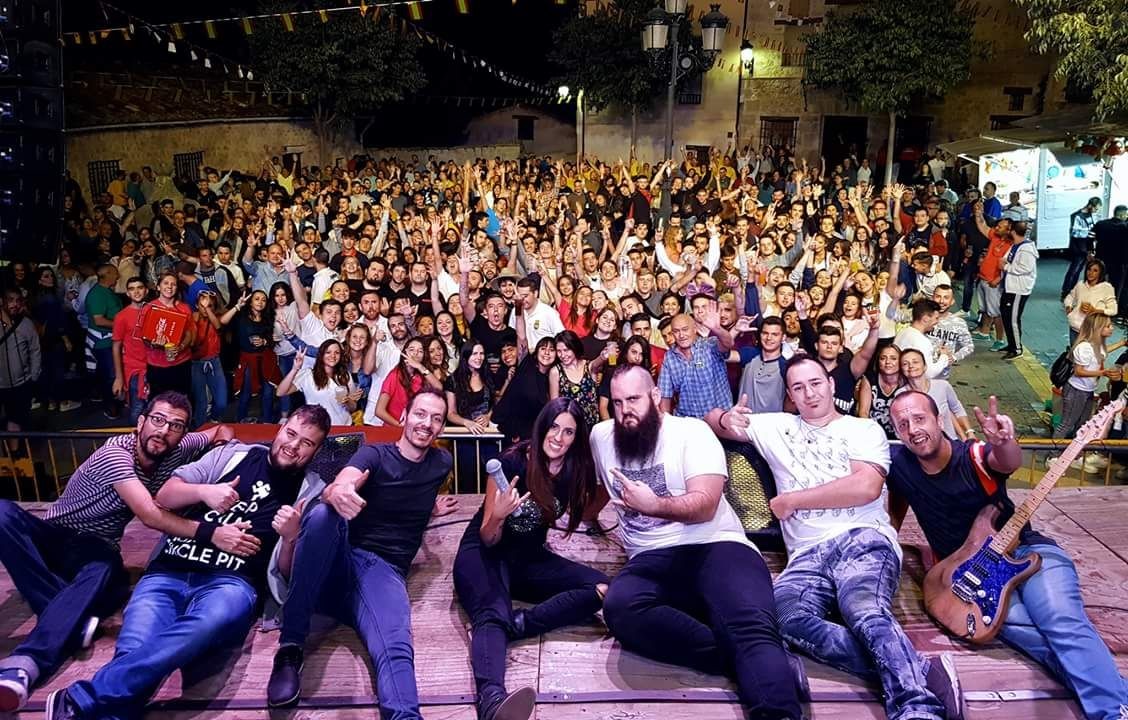 View of the square full of people along with a band during the parties
View of the square full of people along with a band during the parties
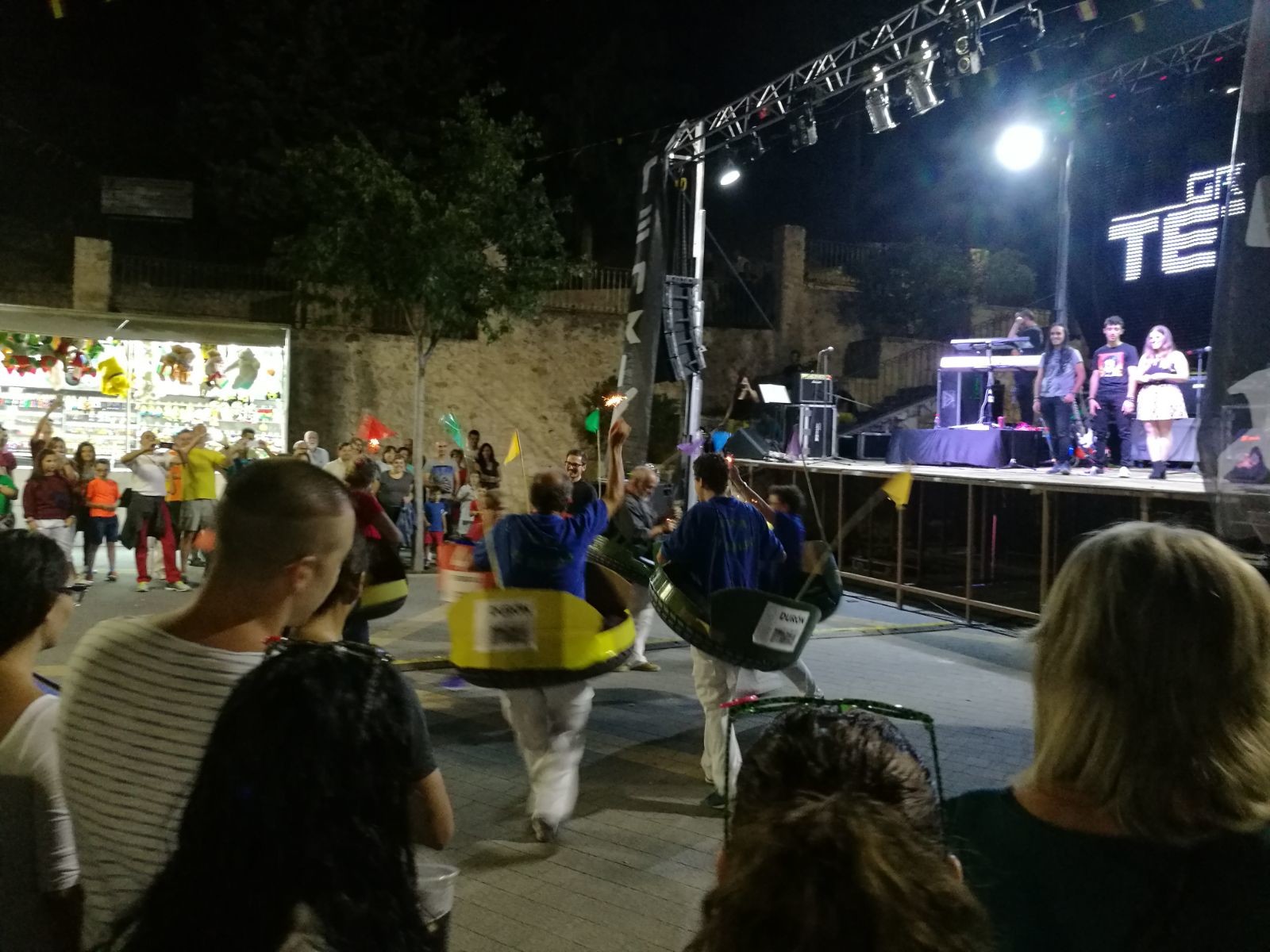 Fancy dress party in Durón; showing the imagination of one of the groups
Fancy dress party in Durón; showing the imagination of one of the groups
Unfortunately, the parties have changed a lot, nowadays there are no bullfights, nor bull running, something which was difficult for a lot of people to watch. I would also like to mention that the budget for the parties in Durón comes entirely from the Town Hall; until 3 or 4 years ago, everyone in the village made a fixed contribution to help pay for the expenses. That's quite normal, well at least in the villages in Guadalajara. If you're from the village, you pay, but if for example your partner also goes to the parties, they also pay.
The Reservoir
On the "most important" day during the celebrations, there's a mass in the Hermitage of Nuestra Señora de la Esperanza, which is a few kilometres away from the village, going up a hill called la Olla Espera. In front of it there's an old abandoned school. Said hermitage had another settlement in the past, but with the construction of the Entrepeñas reservoir, they moved to another location before it had the chance of being flooded. The blocks of the old hermitage were moved to the Olla Espera hill ready for the new one to be built.
However, the most important thing about this place is the extraordinary view which you can see of the Entrepeñas reservoir. Unfortunately, this summer the reservoir dried up. The transferring of the water and the permanent drought has left the reservoir with just a little stream.
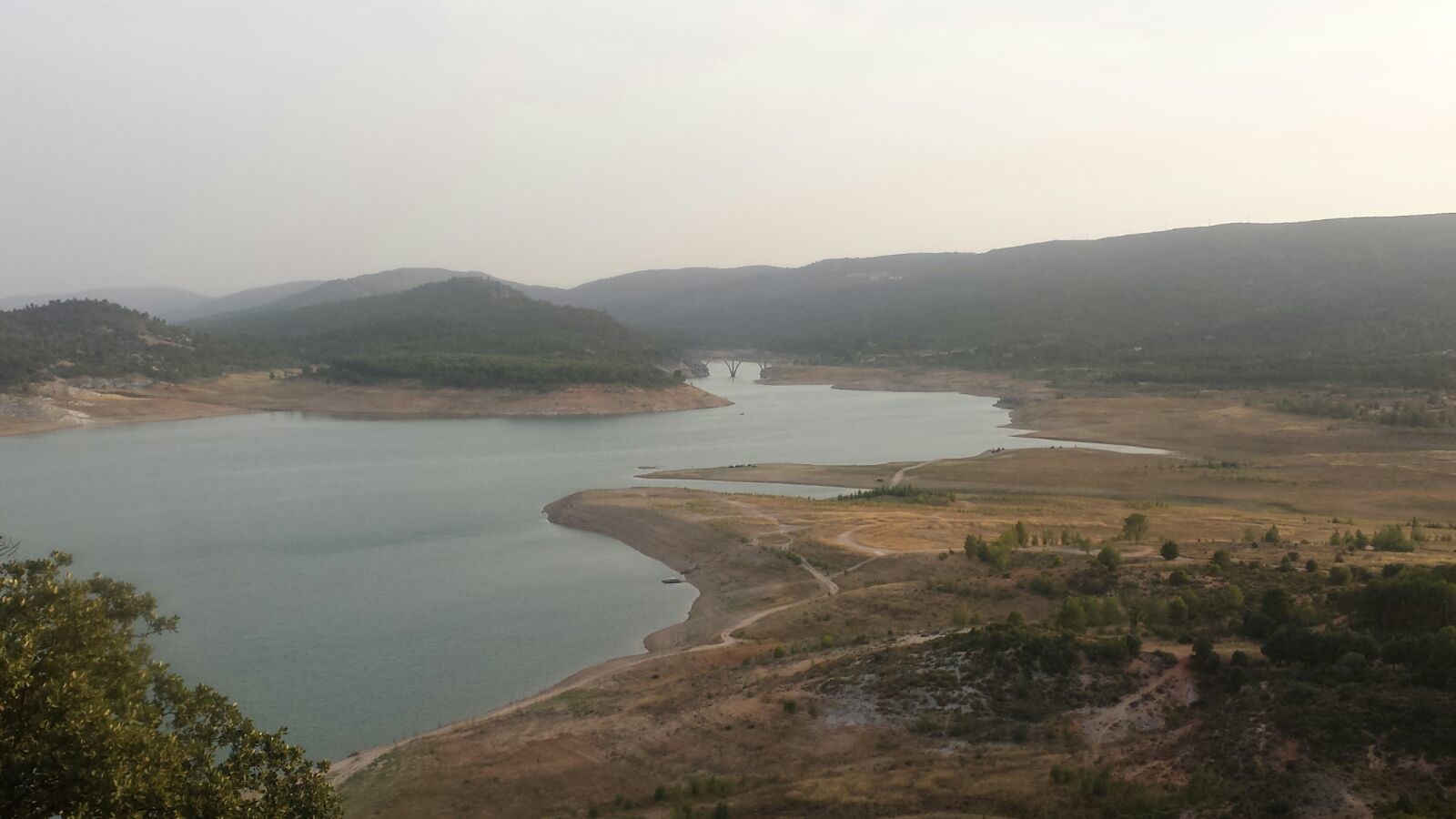 The Entrepeñas Reservoir last year
The Entrepeñas Reservoir last year
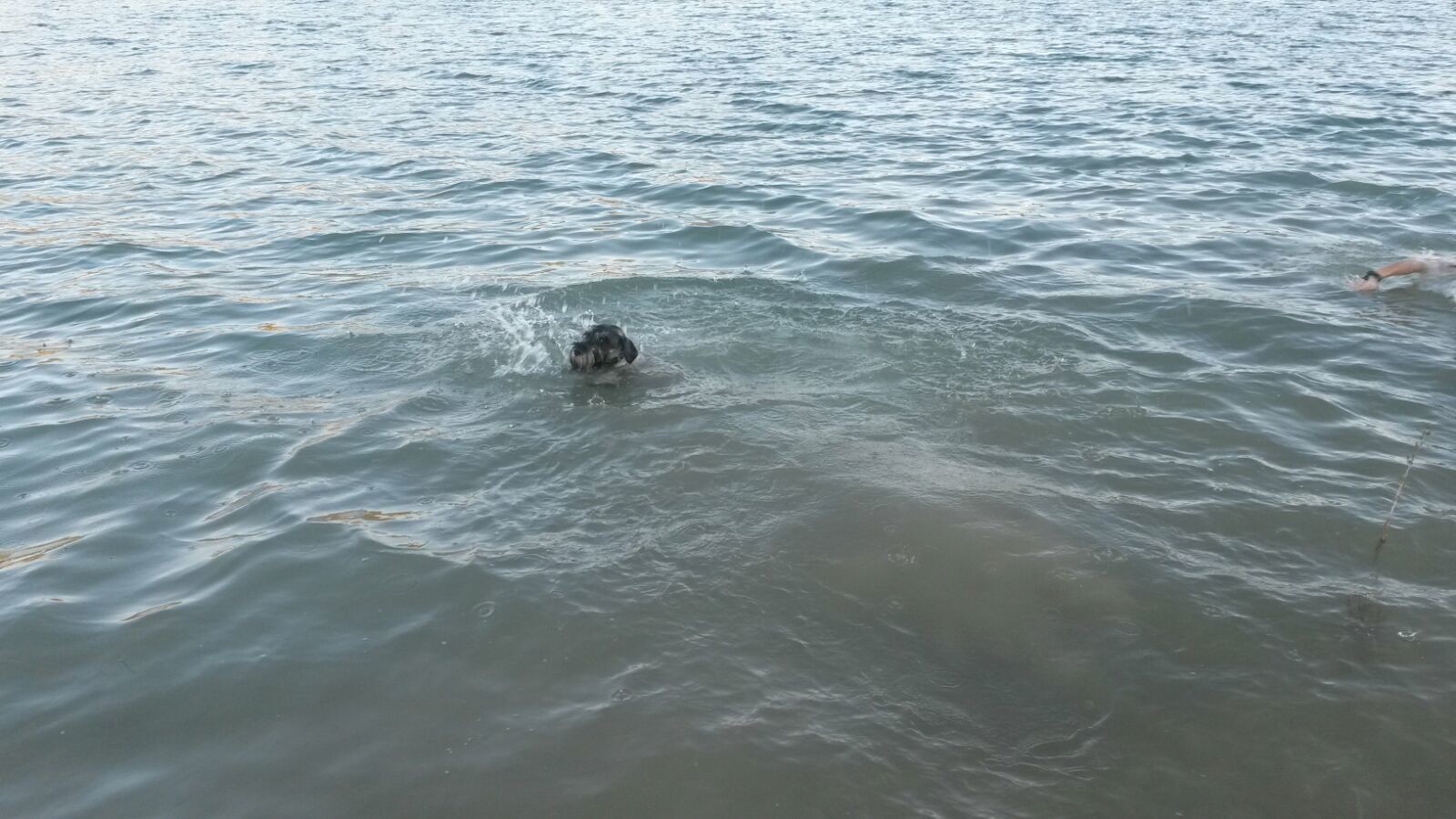 Even my dog went in for a dip! 2016
Even my dog went in for a dip! 2016
What kind of excursions can you do from Durón?
Camilo José (author) went around all the villages on the Acarria route, first in 1941 and again at the end of the 80s. So, why not spend a day in one of the marvellous villages which make up the region? Here's a newspaper report from El Mundo concerning the first time the he won the Nobel Prize for writing about these beautiful places.
What Durón can say about Camilo José Cela's first visit was that he was held prisoner in the dungeon of a pueblo which is 5 kilometres from Durón, called Budia. The Spanish Military Police thought he was a beggar lurking around the area. The following morning Cela had to make a call to be able to be released and continue his journey. His next stop was in Durón, where one of the families took him in and gave him food; a family he kept in contact with for the rest of his life. During his second visit, what caught everyone's attention the most was that he came in a Rolls Royce and had a black woman chauffeur Viana Oteliña Gordón.
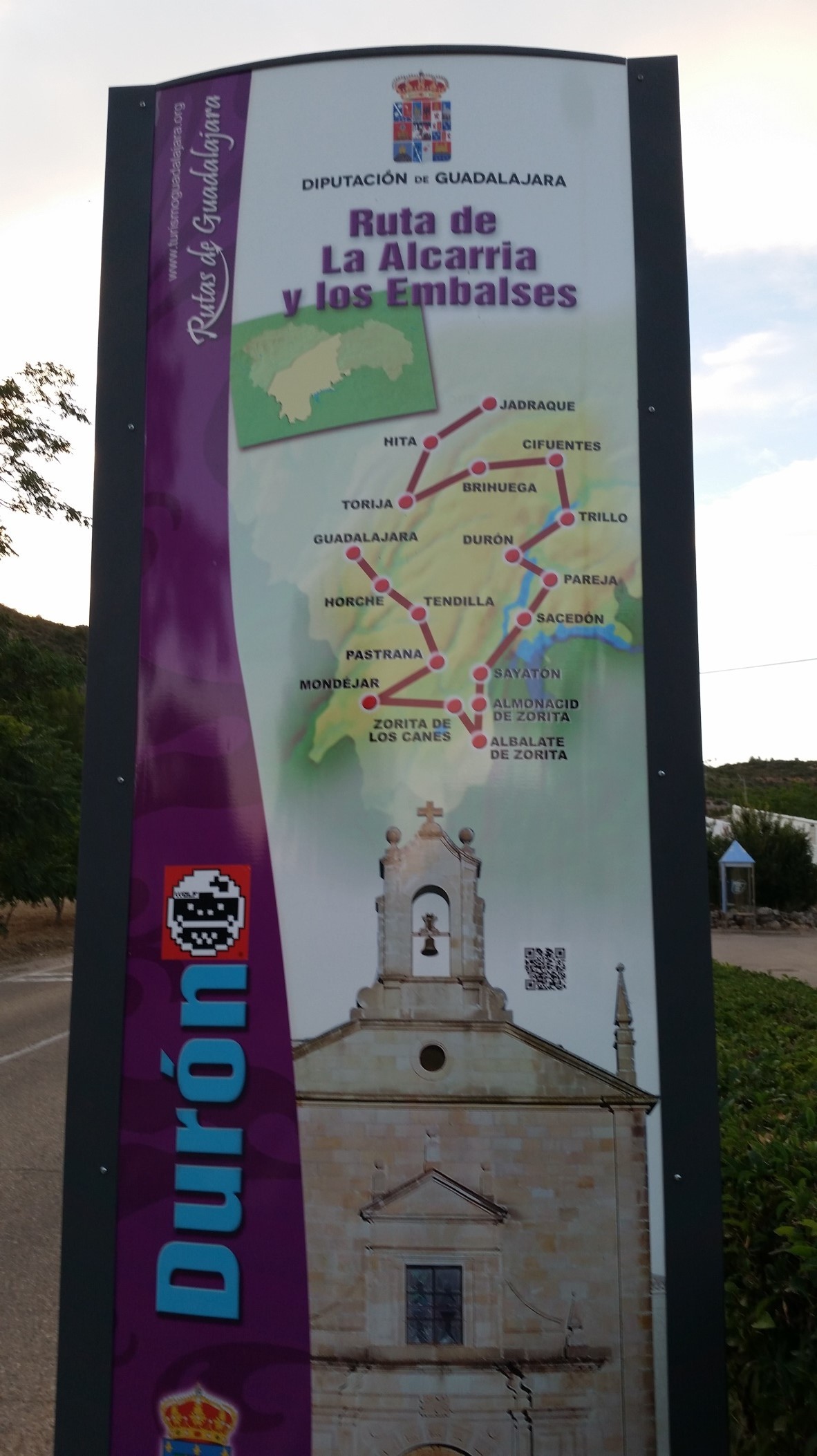 Leaflet of the Alcarria route, Durón
Leaflet of the Alcarria route, Durón
I would like to make a few recommendations on some of the villages, my favourites, listed on the Alcarria route and the Reservoirs:
- Jadraque: you must see the Cid Castle (only its external structure is preserved), and the outside of a house where Juana la Loca stayed when she visited (if you look closely at the edge of the roof, you'll see a six point star which indicated that Jewish people lived there). You can also see the House of Inquisition emblem.
- Hita: you can't miss out on the medieval festival at the beginning of July nor its beautiful Spanish square called Arcipreste. The old town is declared a place of cultural interest.
- Zorita de los Canes: must-sees are the castle and the view you get as well as the church San Juan Bautista. Very near, you'll find the Archaeological site Recópolis, which I really recommend visiting.
- Pastrana: apart from its medieval style, and going on long walks, you must go to the Ducal Palace; Philip II imprisoned the Princess of Éboli there.
- Brihuega: the Castle Peña Bermeja and the Arab caves are only some of many great things to see.
But, outside of the villages part of the route, you can also visit some which form part of the black architecture, just a little more than an hour and a half away from Durón. These include: El Espinar, Campillejo, Robleluengo, Majaelrayo, Almiruete, Palancares and Valverde de los Arroyos. If you haven't heard of any of these villages, wait no longer and come here. I'm sure you'll love them as much as I do. And, very near these villages, it's interesting to walk around the Ducal Palace and the church Santa María de Cogolludo, the Palace de los Mendoz in Tamajon and the Monastery of Bonaval de Retiendas. These are only some examples of everything the Guadalajara province has to offer.
Very close to Durón, at only 8 kilometres away, there's a village which I mentioned at the beginning of this post: Valdelagua. As I've already said, it hasn't been lived in for years, but it's one of the most fabulous areas I know. It's in a dip, in the middle of nowhere. There's a stream which flows through the village and it's surrounded by vegetation. Also, the fountain where women used to wash their clothes in the past has been preserved (el lavadero). Although in the last few years, some owners have renovated their houses (considering that there aren't many), they only receive a few visitors every summer who stay for a few days (maybe 5 or 6 families). Not too long ago, they didn't even have electricity (nor running water). The few nostalgic people who had houses there, had to use candles whenever they visited for a while.
Famous people from Durón
Basilio Antonio Carrasco Hernando, the last bishop of Ibiza and mentor of Ferdinand VII was born in Durón and baptised in the church Santa María de la Cuesta. He was called "the poor people's bishop" because he shared everything he had with the people who had nothing. Interestingly, he was born in Durón in a hay loft and he was buried, in a very strange way, under a bed of straw placed on top of his bishop's coffin.
The following post will be dedicated to all the streets in Durón so you can get to know the village I'm talking about a little more.
Photo gallery
Content available in other languages
- Español: Durón (Guadalajara) 1/2
Want to have your own Erasmus blog?
If you are experiencing living abroad, you're an avid traveller or want to promote the city where you live... create your own blog and share your adventures!
I want to create my Erasmus blog! →





















Comments (0 comments)